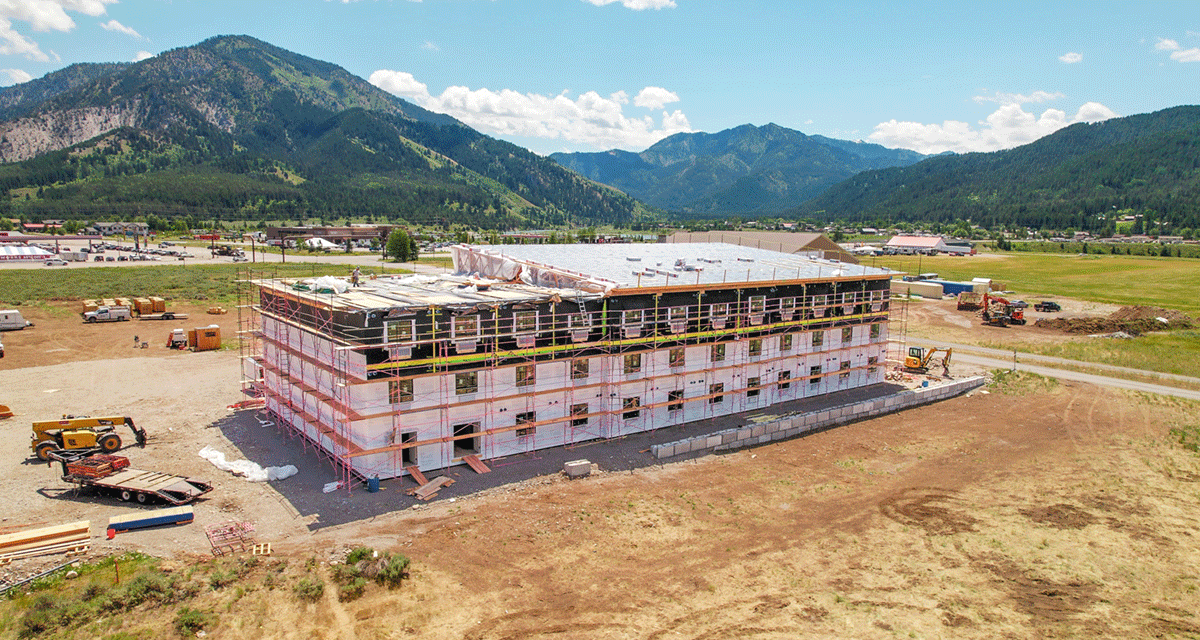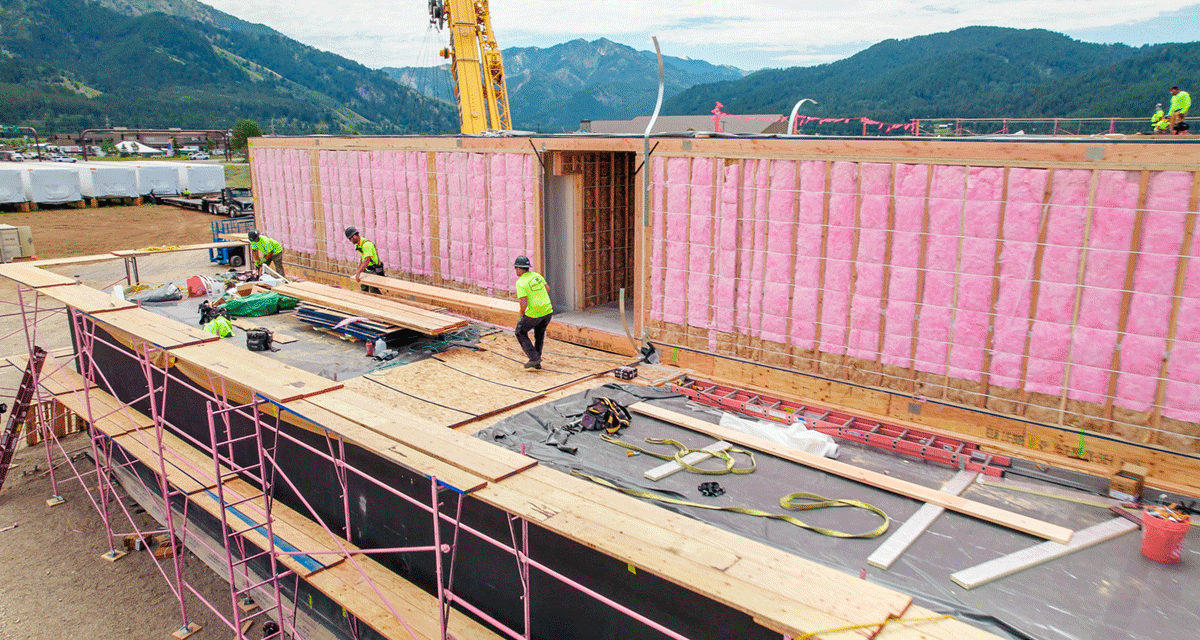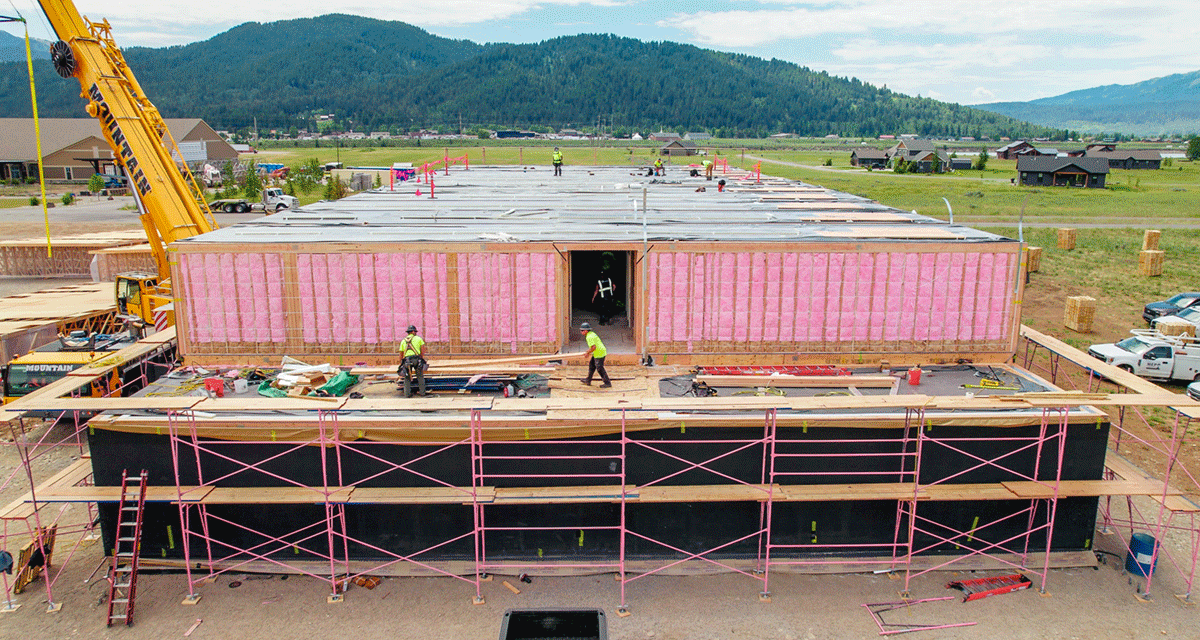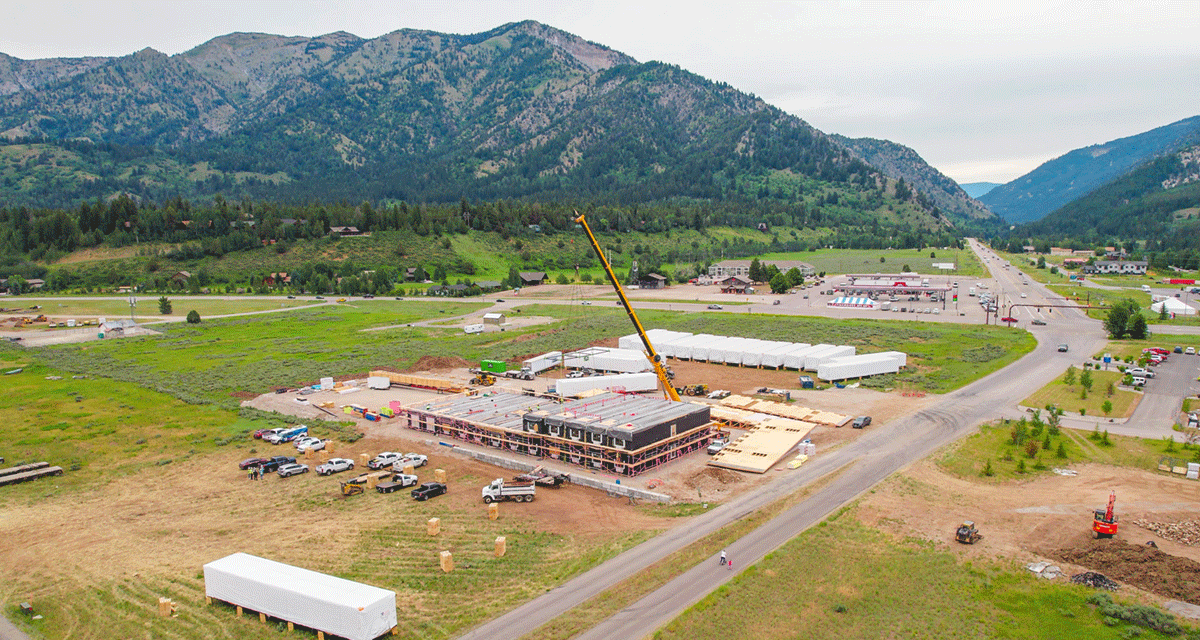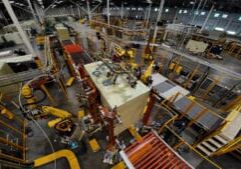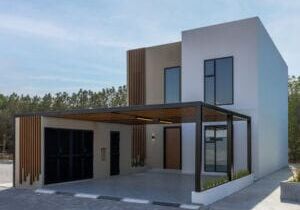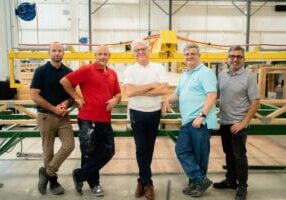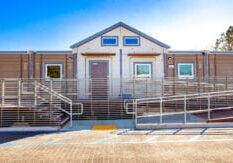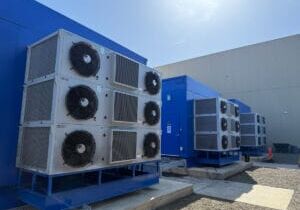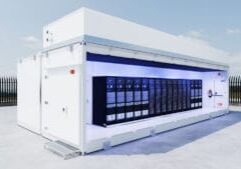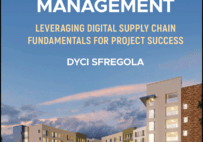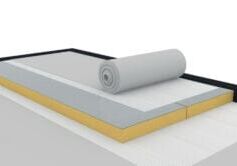Hawthorn Extended Stay by Wyndham—Jackson, WY
Few places are as picturesque as Jackson, Wyoming. That can be both a blessing and a curse. The scarcity of housing has forced even dual-income families to make a tough choice: commute from the few towns nearby with scarce but less costly housing, or leave their dream community. People like Casey Rammell are attacking this challenge on multiple levels—and they’ve tapped Autovol for help.
Growing up in nearby Driggs, Idaho, Casey has built a range of housing and accommodations in the area, and cofounded GCHB Venture with partner George Masing. Bringing housing to these parts takes a lot of know-how and ingenuity. Mountain resort conditions pose a triple threat: short build seasons, lack of local workforce, and a huge imbalance in housing supply and demand.
“We’re attacking a 3,000-unit problem 60 units at a time,” Casey shares. “The quicker we can turn more projects, the sooner we’ll bring some real impact. It starts with being able to house the crews we bring to the area during the summer months when lodging prices are astronomical.”
Casey had tried projects using panelized and containerized approaches that left him unsure, but still determined to try again. He and George saw automated modular as a possible silver bullet worth reconsidering. Reaching out to Autovol soon helped them get on board.
“We were still very interested in the process, but we had to find the right company to do it with,” Casey said. “Once I went over and walked Autovol’s plant to see how they did it and what their inspection process was, it closed all the gaps for us right there.”
Initial Autovol visits included Casey and George as well as Autovol’s CEO, Rick Murdock; CTO, Curtis Fletcher; Director of Business Development, Michael Merle; and Director of Preconstruction, Steve Clough. Steve helped define the project upfront by designing a preconstruction checklist that aligns developer needs with modular design and factory best practices to optimize efficiency and constructability.
Before hitting Autovol’s factory floor, the project was designed and modeled by Prefab Logic, another firm co-founded by Rick and Curtis. The design was created using Prefab Logic Housing products, developed by Curtis. Already factory-proven and site-friendly, the predesigned products accelerated the process for the developer/architect significantly and reduced the overall design costs. These products also leveraged the power of standardized design and supply-chain materials to take advantage of economies of scale.
“The initial design came together in a matter of a couple hours,” Curtis says. “That formed a good basis to customize with some customer-specific features. With these tools, we can establish a starting place and customize a design in a fraction of the time. At the same time, the design is basically vetted for constructability in the modular factory and onsite. Besides speed, these tools also greatly simplify materials procurement and project execution.”
The plan was to build the project in two phases. This would enable the property to open sooner and start accommodating guests while completing the second phase. The digital twin was designed to provide a complete factory-ready model for both phases upfront. That gave the factory everything it needed to bring each phase into production quickly. It also enabled everyone a way to plan both phases ahead of time, and begin prepping the site in advance.
“All the stakeholders leaned into this project and I think it really paid off in quality and strong execution,” Steve says. “We had developed a preconstruction checklist to define things upfront. It paid off as everything came together. Things like the room size put Autovol’s module length limit to the test, but the factory crew was ready, and they delivered.”
All the careful planning and collaboration enabled the finished modules to begin shipping immediately after factory completion. Seasoned crews from Snake River MEP and Accuset Construction were keyed up to set the building at breakneck speed.
“Onsite logistics were amazing,” Steve says. “And the alignment turned out extremely tight, with tolerances of 1/8-inch.” Some advanced approaches made the onsite set process especially efficient. Autovol onsite services director Joe Sievers and Accuset founder Kirk Hall brought forward a smart suggestion: pre-building the roof in pieces on the site foundation in advance.
While the modules were enroute from Nampa to Alpine, an onsite team sheeted prebuilt roof trusses on what would become the building foundation. This sped up the completion of the roof structures, as well as the “dry in” process essential to protect the building from any potential rain.
“We finished the roof structures on the ground,” Casey says. “They swung them out of the way while setting the modules, then set them on top. We probably got the roof sheeted in a quarter of the time on the ground than we would have in the air. With this approach, it had us pretty much dried in after about 10 days.”
At this writing, the project is still a few months from occupancy. But many of first-phase rooms are already reserved for long-term guests including GCHB Venture crews, and staff at a clinic in Alpine eager to provide housing for healthcare staff in such a limited market.
“This project would have gone 18 to 24 months on a conventional schedule. We’ll do it in eight,” Casey says. “That kind of speed is good for everyone. I like to do things as efficiently as possible so that everyone on the project makes money. In that process, things go quicker, we get the doors open quicker, and our customers get a better project in the end. Hopefully we’re generating a few million a year in gross revenue, so getting your doors open 10 months sooner can mean a pretty big savings.”
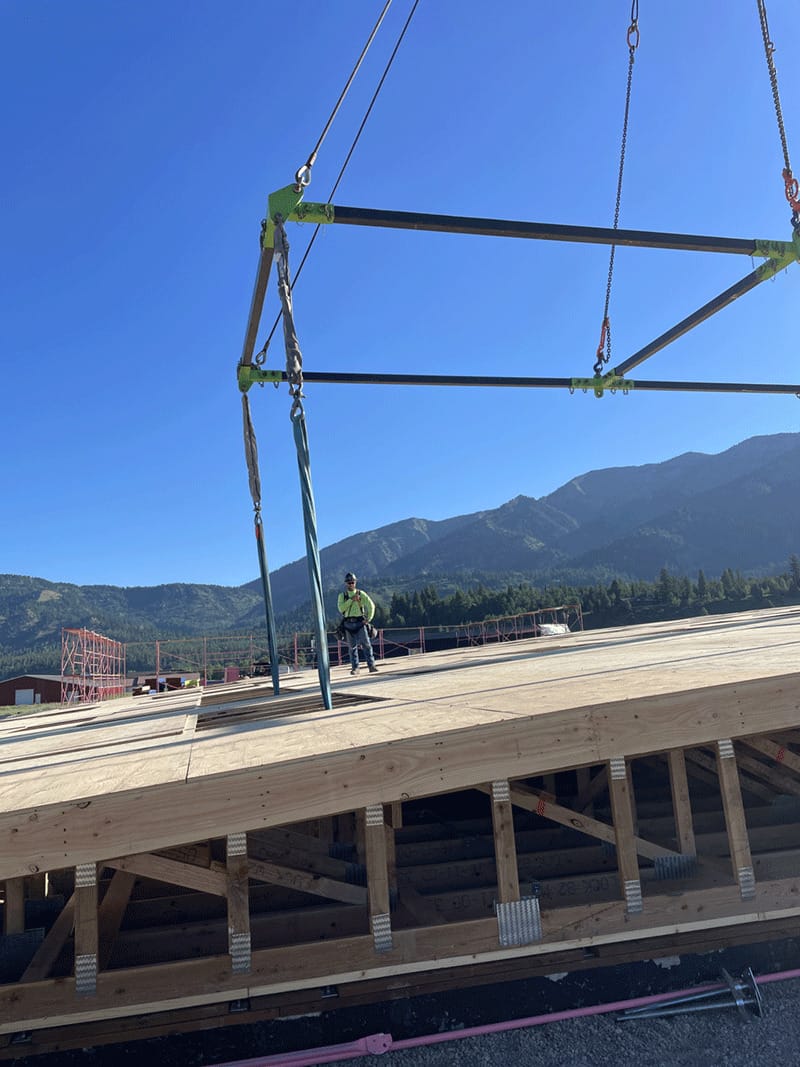
More from Modular Advantage
Resia: Breaking All the Rules
Resia Manufacturing, a division of U.S.-based Resia, is now offering prefabricated bathroom and kitchen components to industry partners. Its hybrid fabrication facility produces more precise bathroom and kitchen components (modules) faster and at lower cost than traditional construction. Here’s how Resia Manufacturing does it.
How LINQ Modular Innovates to Bring Modular To The Market in the UAE and Beyond
LINQ Modular, with an office and three manufacturing facilities in Dubai, is a modular firm based in United Arab Emirates. The company is on a mission: to break open the housing and construction markets in the Gulf Cooperation Council (GCC) area with modular.
ModMax: Redefining Modular Construction with Confidence and Precision
ModMax was born out of frustration—frustration with five persistent pain points in modular construction: Permitting bottlenecks. Production delays. Rigid designs. Disconnect between “the office” and the field. Lack of transparency and communication.
LifeArk: Disaster-Resilient Housing from Recycled Plastic and 100-year-old Technology
Wee compares LifeArk’s housing units to Yeti coolers, as they are built similarly. Each component takes 15 to 20 minutes to manufacture, has an R-value of 40, and includes molded slots and chases for wiring, plumbing, fire sprinklers, and other utilities.
Building the Future of Modular Edge Infrastructure
The edge data center market is expanding rapidly, driven by the surge in AI workloads, IoT adoption, and the need for localized compute power. In these environments, sustainability, scalability, and reliability are non-negotiable. Cooling is among the most complex challenges for operators—and one of the most decisive factors in long-term success.
Accelerating Light-Gauge Steel Construction: A Semi-Automated Digital Workflow for Off-Site Projects
For construction professionals, the message is clear. By adopting semi-automation and digitalization, companies can deliver projects faster, more accurately, and more profitably, while also building stronger collaboration across teams. The approach is not about replacing people with machines, but about empowering people with better tools and processes.
Why Modular Data Centers Are Gaining Momentum
Artificial intelligence, high-performance computing, and edge applications push the limits of traditional “stick-built” data centers. They take years build, often struggle with high density workloads, and aren’t optimized for deployments near end users. Modular data center platforms are purpose-built to address these challenges, offering flexibility and scalability to adapt to evolving technologies, while opening new opportunities for the modular construction industry.
Supply Chain Innovation in Action: 5 Habits Every Modular Leader Should Practice
By applying these principles to supply chain practices — collaborative planning, strategic procurement, scenario modeling, digital tools, and transparent forecasting — construction leaders can build value chains that are not just efficient and agile, but truly innovative.
Exploring the Role of Modular Integrated Construction (MiC) in Advancing Circular City Principles – A Survey of Stakeholder Perspectives
The survey findings highlight the significant potential of Modular integrated Construction (MiC) in advancing the development of circular cities. By reducing costs, accelerating construction timelines, and minimizing waste generation, MiC offers a promising approach to sustainable urban development.
The Use of MS POLYMER™-Based Sealants and Adhesives in Modular Building
These products combine flexibility and elastic recovery with excellent adhesion to different substrates and have already shown their usefulness in traditional construction. Now it’s time for them to be put to use in the modular construction industry.



